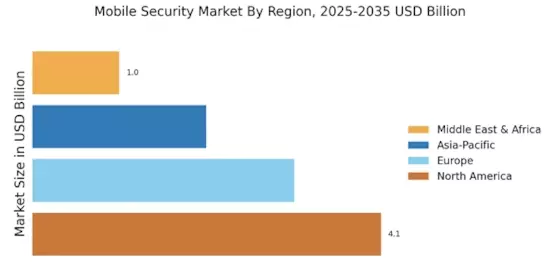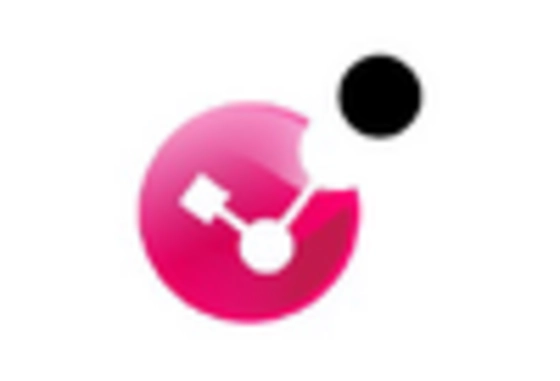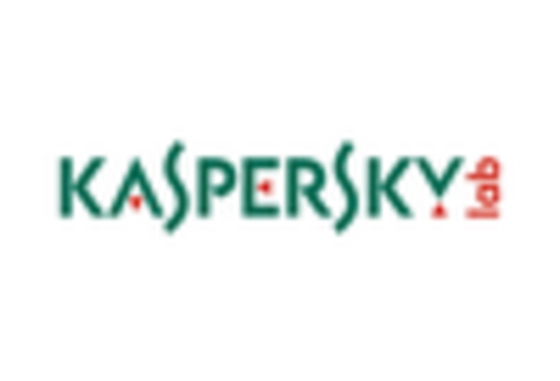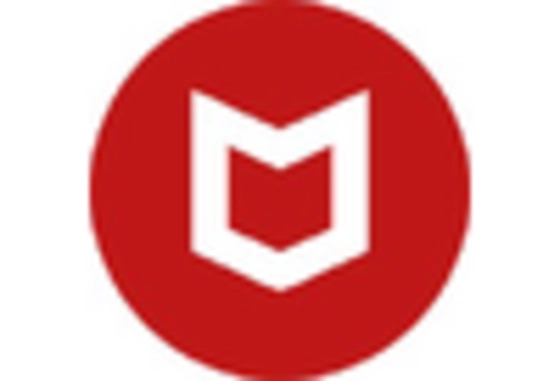Surge in Mobile Device Usage
The proliferation of mobile devices has led to an unprecedented demand for security solutions. As of October 2025, it is estimated that there are over 6 billion smartphone users worldwide, which has significantly increased the attack surface for cybercriminals. This surge in mobile device usage necessitates robust security measures to protect sensitive information. The Mobile Security Market is responding to this demand by developing advanced security solutions tailored for mobile platforms. Companies are investing heavily in mobile security technologies, with projections indicating a compound annual growth rate of over 20% in the coming years. This trend underscores the critical need for effective mobile security solutions to safeguard user data and maintain consumer trust.
Rising Cyber Threats and Attacks
The frequency and sophistication of cyber threats targeting mobile devices are escalating, prompting a heightened focus on mobile security. Recent reports indicate that mobile malware attacks have increased by over 50% in the past year, highlighting the urgent need for effective security solutions. The Mobile Security Market is responding to this alarming trend by developing advanced threat detection and response technologies. Organizations are increasingly aware of the potential financial and reputational damage caused by security breaches, leading to a surge in investments in mobile security solutions. As cybercriminals continue to exploit vulnerabilities in mobile applications and operating systems, the demand for comprehensive security measures is expected to grow, driving innovation within the industry.
Regulatory Compliance Requirements
The evolving landscape of data protection regulations is driving the Mobile Security Market to adapt and innovate. Governments across various regions are implementing stringent regulations to protect consumer data, such as the General Data Protection Regulation (GDPR) and the California Consumer Privacy Act (CCPA). These regulations compel organizations to adopt comprehensive mobile security measures to ensure compliance and avoid hefty fines. As of October 2025, the market is witnessing a surge in demand for solutions that facilitate compliance with these regulations. Companies are increasingly seeking mobile security solutions that not only protect data but also provide audit trails and reporting capabilities to demonstrate compliance. This regulatory pressure is likely to propel the growth of the mobile security sector, as businesses prioritize investments in security technologies.
Integration of Advanced Technologies
The integration of advanced technologies such as artificial intelligence (AI) and machine learning (ML) is transforming the Mobile Security Market. These technologies enable security solutions to analyze vast amounts of data in real-time, identifying potential threats and vulnerabilities more effectively. As of October 2025, many mobile security providers are leveraging AI and ML to enhance their offerings, providing users with proactive security measures. This trend is likely to continue, as organizations seek to stay ahead of evolving cyber threats. The adoption of these technologies not only improves the efficiency of security solutions but also reduces the time required to respond to incidents. Consequently, the Mobile Security Market is expected to experience significant growth as businesses increasingly recognize the value of integrating advanced technologies into their security strategies.
Consumer Awareness and Demand for Security
There is a growing awareness among consumers regarding the importance of mobile security, which is driving demand for security solutions. As mobile devices become integral to daily life, users are increasingly concerned about the safety of their personal information. Surveys indicate that over 70% of consumers express a desire for enhanced security features in their mobile applications. This heightened awareness is prompting developers and businesses to prioritize security in their offerings. The Mobile Security Market is witnessing a shift towards user-centric security solutions that not only protect data but also enhance user experience. As consumers continue to demand more robust security measures, companies are likely to invest in innovative solutions that address these concerns, further propelling the growth of the mobile security sector.


















Leave a Comment